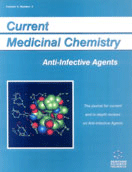Abstract
The extensive use of antimicrobials in community as well as nosocomial environments during the last half century has created a pressure that is able to select resistant microorganisms, transforming this “evolution” into one of the most dangerous phenomena of the last twenty years. Two different aspects of the same problem have to be examined: the appearance of “new opportunistic multiresistant microorganisms, and the assembly of resistance related genetic elements from heterologous sources in well known pathogens. In both cases, the bacterial response to this selective pressure is the acquisition and spread of a variety of determinants due to mutations of normal cellular genes, acquisition of foreign resistance determinants or a combination of these two genetic mechanisms. All these processes are generally present in contemporary Gram-positive pathogens that have evolved and spread over the last twenty years becoming a special, and perhaps unique, threat for the emergence of resistance in our era. Streptococcus pneumoniae, Streptococcus pyogenes, Staphylococcus aureus, and Enterococci, which are currently isolated, are no longer the same organisms isolated 50 years ago: becoming multiresistant or predominant opportunistic pathogens, they have paid a “biological price” to the use of antibiotics in a short time period. Once established, a resistant strain may persist under selective pressure from numerous antimicrobials, furthermore, some resistances are widespread and others local, but it is still unclear why some bacterial lineages achieve epidemic spread whereas others, that are equally resistant, do not. Many interesting new antibiotics have been developed and recently marketed or are undergoing phase III clinical trials. These drugs, some of which have novel mechanisms of action, may help to counterbalance and, if used appropriately, prevent the spread of resistant bacteria. This review will consider some of these new drugs such as streptogramins, oxazolidinones, the newer fluoroquinolones, ketolides, daptomycin, new glycopeptides, glycylcyclines and the newer cephalosporins.
Keywords: gram-positive, resistance, multiresistant strains, mutations, genetic units, oxazolidinones, daptomycin, ramoplanin, ketolides, oritavancin
 2
2

